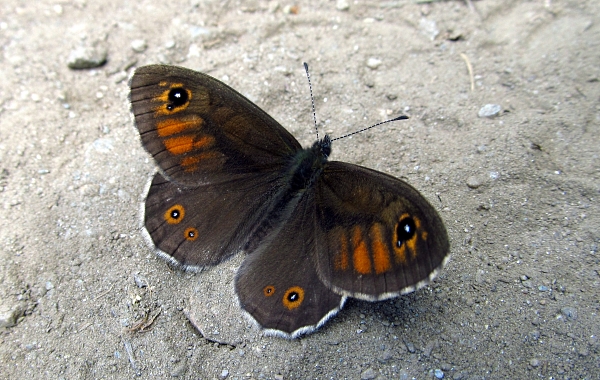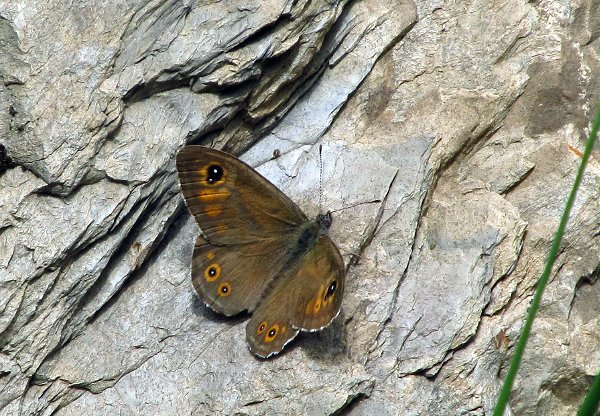
Male, Switzerland, May 2016

Male, Switzerland, June 2017

Female, Switzerland, July 2018

Female, Switzerland, August 2017

Female, Switzerland, June 2015

Female, Switzerland, June 2014

Male, Switzerland, July 2012

Female, Switzerland, June 2006

Male, Switzerland, June 2009

Switzerland, June 2013

Switzerland, June 2012

Female, Switzerland, July 2014

Male, Switzerland, June 2011

Female, Switzerland, June 2009

Female, form adrasta, Val d'Aran,
Pyrenees, July 2005

Distribution
Common in much of Europe, this is a butterfly of grassy, rocky places,
often in woodland. In Switzerland it is a frequent sight along forest
tracks on south-facing slopes, where large rocks heat up in the sun. It
spends some time basking on the warm surfaces, then, when it gets too
hot, moves under the shady projections out of the sun. It enjoys
nectaring, particularly on dandelion-type flowers, where it will often
pose for photos - but it is wary, and will fly readily on a careless
approach.
Males are usually rather dark above, the sex brand obscured by the
brown ground colour of the wings. Females are brighter, resembling
walls but with fewer transverse lines on the forewing, leading to a
more open effect. They are darker in the norther, however, especially
in Scandinavia, and very bright in the Mediterranean region and Iberia
- form adrasta.
From the
upperside, dark individuals might be confused with the slightly smaller
northern wall. This latter is distinguished by a wavy transverse line
across the hindwing. From the underside, large walls are similar to
walls and northern walls but note that the hindwing ocelli on wall are
single-ringed while those of large wall are double-ringed, and that
northern walls have a darker grey costal region on the forewing - often
quite clear in large wall.
The caterpillars feed on various common grasses and it is this stage
that hibernates. The adults fly in one or two generations, depending on
latitude and altitude, from April or May to September (June to late
August where single-brooded).




















